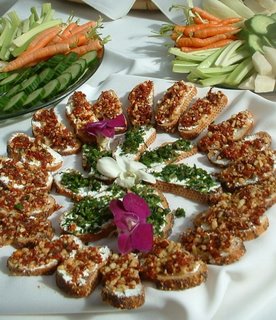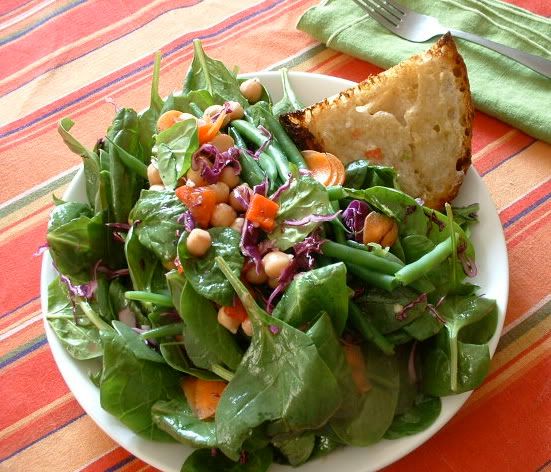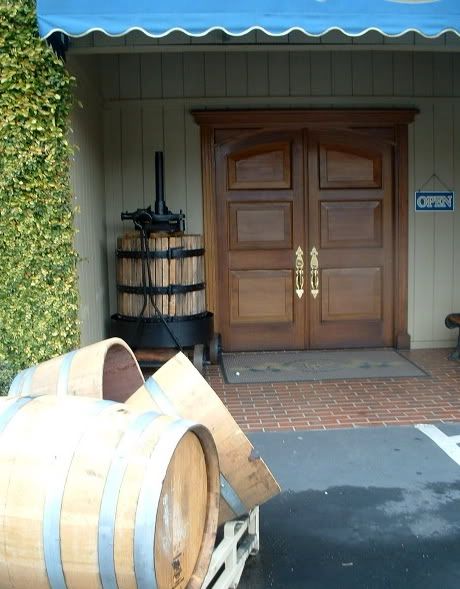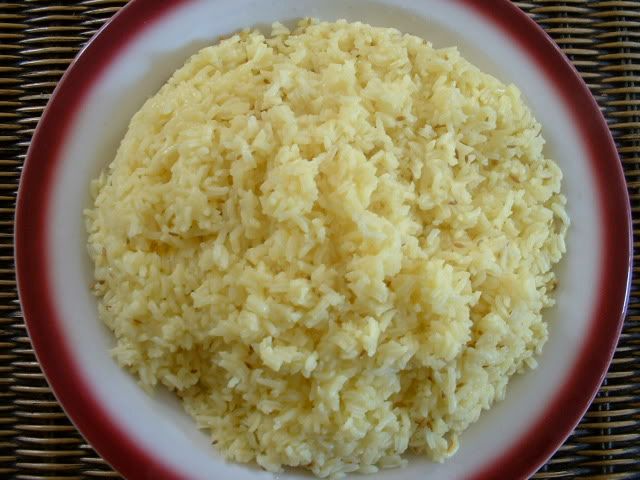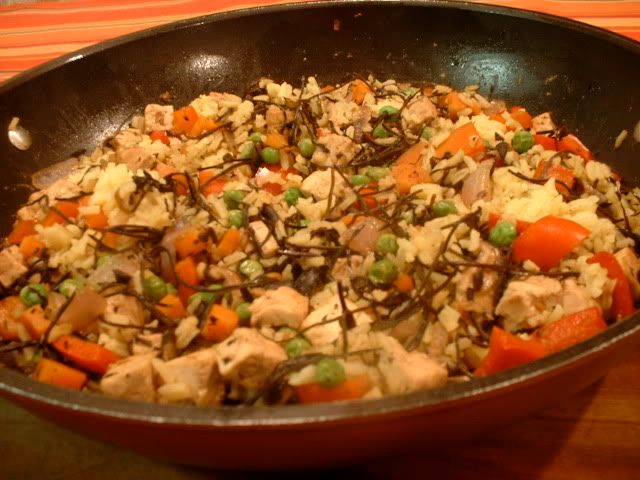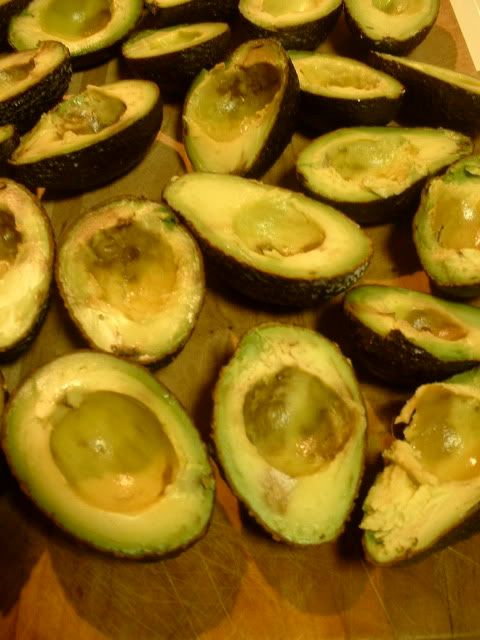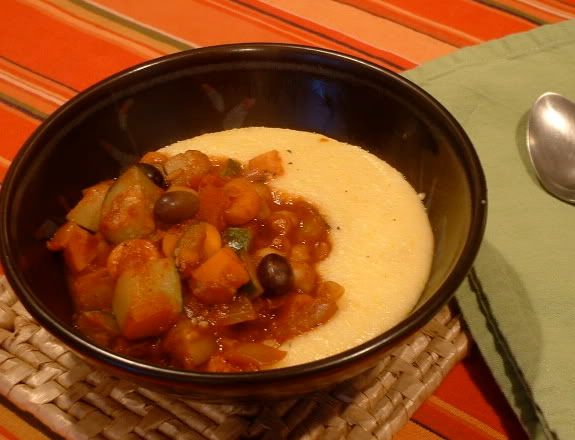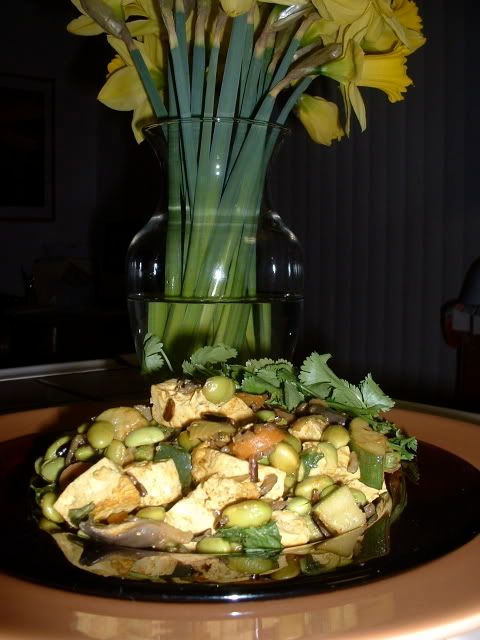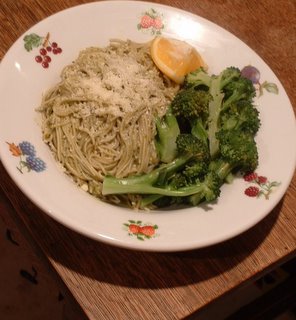Brown rice redux #1
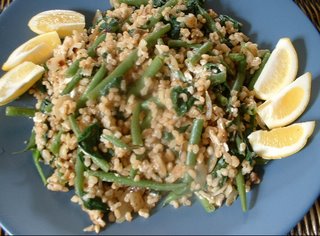
I was going to write about "slum- gullion" today, which is what my dear departed mother always called her catch-as-catch-can, clean-out-the-fridge, one-pot meals. It's my birthday (no gifts, please) so I'm thinking about what she and I experienced together exactly xxx years ago to the day -- and for 24 years thereafter. I got my artistic spirit and my love of cooking from her and appreciate those legacies a lot. Happy Birthday, Mom, wherever you are...
So anyway, I decided to look up the word in the dictionary and found out a slumgullion is a watery meat stew. Mom's slumgullion was never watery but probably always included ground beef or some other meat. That's not what I do, of course, and now slumgullion seems like the wrong moniker. Then again, "bits-and-pieces-of- whatever's-on-hand" doesn't quite roll off the tongue.
So never mind about the name. Whatever you call it, it's a process of combining various ingredients in a saute pan with seasonings of choice to create something yummy. Of course, that's what cooking is always about, but for yum-gullion you're deliberately using up odds and ends of still-fresh food that you only have a little bit of.
Yesterday I had some cooked brown rice that was a few days old and needed to be used up. I also had some steamed green beans left over from the previous day's salad. I had half an onion and a small hunk of feta cheese that wasn't going to last much longer. So I sauteed the onion with a few cloves of garlic and some chile flakes, added the rice and green beans and a good amount of dried oregano, poured in a little veggie stock, covered the pot, and cooked the concoction until it was nice and hot. Stirred in the crumbled feta and the last of the baby spinach and voila! Something akin to what mom used to make, and plenty delicious.
Who needs watery meat stew?
Tags: vegetarian cooking brown rice

